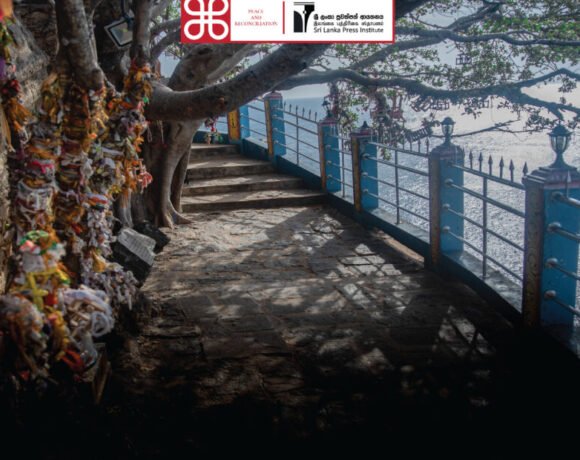Narcotics Devouring the Youth
By: Sheneth Shrimal

If you are someone who follows national media closely, you are likely aware of the daily human tragedies caused by drug trafficking, including murders and societal abuses carried out by addicts. Similarly, the increasing reports of drug parties organized via social media platforms like Facebook, and the related incidents of sexual exploitation involving young men and women, highlight a significant issue. Calculating the extent of such incidents reveals a staggering number. Addressing this grave social tragedy and identifying solutions has become a timely necessity.
In the modern era, among the numerous social, economic, and psychological challenges faced by the youth, drug abuse holds a prominent place. In Sri Lanka, drug usage among young people has rapidly escalated into a societal epidemic. When addressing this issue, it is crucial to delve deeply into its root causes, contributing factors, and potential prevention strategies. This is imperative as it continues to evolve into a pervasive social disaster that undermines the very fabric of society.
According to the latest judicial reports, drug use among Sri Lankan youth has increased by approximately 10%. Among the substances gaining popularity are cocaine, marijuana, and various forms of illegal cigarettes (Jayawardena, 2023). These drugs significantly affect the physical and mental well-being of young individuals while diminishing their future opportunities.
There are various reasons why young people turn to or are influenced by drug use. Internal factors include a lack of strong family bonds between parents and children, family instability (such as parental separation, migration, step-parents, or the death of one parent), economic imbalances, educational setbacks, and mental stress (Neelani, 2021). External factors influencing drug use include peer pressure, association with older friends, the living environment, and societal surroundings.
Drug use has significant impacts on both the personal and social lives of young people. Its major consequences include physical health problems, mental disorders, educational challenges, loss of employment opportunities, and an increase in criminal behavior (Perera, 2022). These effects pose a significant barrier to societal well-being and socio-economic development.
Efforts to prevent drug abuse are being implemented at both governmental and non-governmental levels. Key measures include educational programs, raising societal awareness, and enforcing legal actions (Kotugoda, 2023). Organizing detailed awareness campaigns in schools and universities, strengthening family relationships, and taking strict legal measures against drug-related crimes are critical components of these efforts.
A unified approach by the government, families, and institutions is essential for successful prevention. Government measures, such as strengthening legal frameworks, providing counseling services to educational institutions, and expanding social services, can yield positive outcomes (Wickramasinghe, 2023). Support from family members and fostering healthy relationships play a crucial role in preventing youth drug use. Furthermore, schools and higher education institutions bear significant responsibility in these initiatives (Rathu, 2022).
The Presidential Task Force on Drug Prevention, the National Dangerous Drugs Control Board, and the Sri Lanka Police have collectively organized 14 district-level meetings. Additionally, over 15,000 district, regional, and rural-level drug prevention committees have been successfully established across the country. As of today, a reserve of 72,000 technical assistants is actively engaged nationwide in efforts to combat drug abuse.
Rehabilitation camps play a key role in showcasing the success of Sri Lanka’s drug prevention strategies. Programs conducted by these institutions lay the foundation for creating a drug-free nation. These institutions assist young people in transforming their lives by providing vocational training, psychological support, and fostering new attitudes (Senewi, 2023).
It is imperative to further deepen efforts in drug prevention. Utilizing modern technologies to offer remote opportunities and alternative pathways for youth and strengthen social support systems can lead to effective resolutions for this issue (Damith, 2023).
Despite ongoing efforts, drug use in rural areas remains largely unchanged. The transport of drugs continues both from urban to rural areas and vice versa, with only a minimal percentage being intercepted by law enforcement authorities.
In some cases, it has been revealed that certain individuals considered socially elite and parties with political authority are complicit in these activities. This complicity allows the drug epidemic to operate covertly within society, making its eradication increasingly challenging. The consequences of failing to uproot this hidden menace could be far-reaching and immeasurable.
As a result, conflicts within families, violent behavior, and harassment, exploitation, and abuse faced by women become prevalent, with third parties often bearing the consequences of such actions.
Additionally, individuals from impoverished backgrounds with low-paying jobs engage in activities such as stealing crops, selling household items, assaulting mothers or sisters to seize valuable possessions, breaking into other houses to steal goods or food, and selling these items to others. A more severe issue arises when they resort to committing murders in situations where they are unable to achieve their goals or face obstacles in doing so.
This leads to negative societal reactions not only within the family but also in the broader village and community. Their acceptance in society diminishes significantly, and they are often stigmatized and treated as outcasts. They become socially marginalized, facing shame and alienation.
These contributing factors are more prominently observed in rural areas, while the situation in urban areas takes on a different perspective. In urban settings, where population density is higher, thefts and robberies can be carried out more discreetly. Furthermore, urban areas operate through extensive communication networks, which facilitate such activities. Many young women in urban regions become accustomed to drug use, leading to situations where they engage in sex work without drawing significant societal attention or criticism.
Expanding the intervention of state mechanisms can yield positive outcomes in addressing these challenges. Key measures include:
- Awareness Programs: Conducting educational programs involving youth, adults, and social activists to raise awareness of the effects of drug abuse.
- Opportunities for Youth: Providing greater economic and social opportunities for young people to reduce their inclination toward or curiosity about drug use.
- Enhancing Youth Dignity: Creating an environment that ensures a respectful and promising future for young individuals, addressing their aspirations and mental well-being.
- Economic Empowerment: Supporting youth economically to strengthen their ability to lead productive lives.
Drug use among young people poses a significant obstacle to both social and personal development. As a vital and influential segment of society, youth must be guided appropriately, with their aspirations and challenges managed effectively. Prioritizing interventions and support for this generation is crucial to curbing drug abuse and fostering societal progress.
References
- Sirinayake, K. (2022). Drug Use Among Youth: Social and Personal Impacts. Colombo: Social Societies Publications.
- Jayawardena, E. (2023). “Drug Crime Trends in Sri Lanka.” National Security Journal, 15(2), 45-60.
- Neelani, S. (2021). Drugs and the Youth Population. Kandy: Educational Publications.
- Perera, M. (2022). “Religious and Mental Health Impacts of Drug Use on Youth.” Social Health Research Laboratory, 8(1), 25-40.
- Kotugoda, R. (2023). New Approaches to Drug Prevention. Galle: Progressive Publications.
- Wickramasinghe, P. (2023). “Government Policies on Drug Prevention: Current Status and Future Plans.” Politica Journal, 12(3), 78-92.
- Raththu, H. (2022). Schools and Drug Prevention. Kandy: Educational Publications.
- Seneviya, L. (2023). “Drug Prevention Programs in Colombo and Galle: Successes and Challenges.” National Social Journal, 10(4), 50-65.
- Damith, K. (2023). New Opportunities for Youth: Innovations in Drug Prevention. Colombo: Navothpadana Publications.
- Hettiarachchi, K. (2019). “Social Normative Causes Impacting the Youth Community.” Social Research Digest, 15(3), 25-33.







